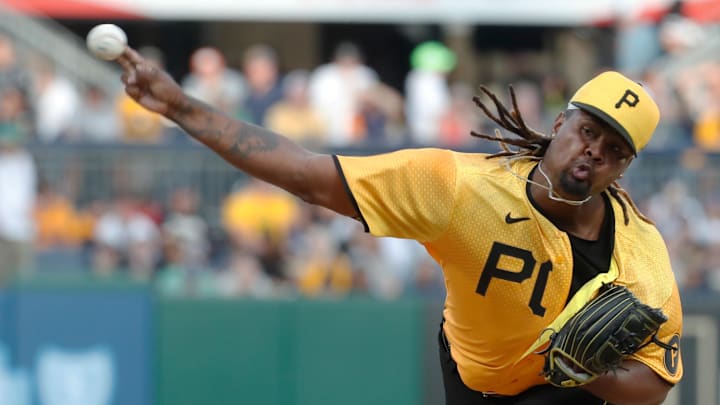Liover Peguero
Liover Peguero was one of the very first prospects Ben Cherington acquired for the Pirates. Peguero was given some regular time up the middle after a few solid minor league seasons and a great start to 2023. Initially, Peguero looked like he could run away with it but then struggled down the line.
In his first 129 plate appearances of the season, Peguero was slashing .274/.323/.462 with a .336 wOBA and 109 wRC+. While his 6.2% walk rate and 27.9% K-rate were unimpressive, Peguero went yard six times with an above-average .188 isolated slugging percentage. This was through September 3rd, but the rest of the month was rough for the infielder.
Over the last 84 plate appearances of 2023, Peguero struggled badly, working to just a .185/.214/.247 line, .204 wOBA, and 20 wRC+. That meant he was 80% worse than the league-average hitter. Pegeuro’s lack of walks and strikeout issues became dramatically worse, as he only walked in 3.6% of his plate appearances with a strikeout rate well above 33.3% at 36.9%.
The main culprit to these struggles was Peguero struggling against breaking pitches. I went more in-depth about his late-season struggles in this article here, but the main takeaway is that he saw more sliders and became ultra aggressive at the same time. But just because he struggled in September doesn’t mean it’s time to throw the towel in on him.
Peguero had a strikeout rate of just 17.1% and walk rate of 10.8% through his last 306 plate appearances in the minor leagues. Also, keep in mind that he went from Double-A, had just a seven game stint at Triple-A, and was jettisoned straight to the Majors. The fact he didn’t even receive 50 plate appearances at Indy, and was decent through his first 100+ MLB plate appearances is a feat of itself.
Peguero is still young. He will remain 23 for all of the 2024 season. He was fast-tracked to MLB this year, so it shouldn’t be all that shocking that there were some bumps in the road. Sure, he might not be as good as Ted Williams at drawing walks or avoid striking out like Tony Gwynn, but almost nobody is. If Peguero can lockdown his discipline against breaking pitches (admittedly, that is easier said than done), he could turn the corner in 2024.
